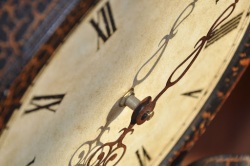 Demographic changes are affecting this nation in ways we never contemplated. Neighborhoods are changing faces on a level not seen since the Second Great Migration that took place from 1941, through World War II, and lasted until 1970. More than five million African Americans moved to cities in states in the North, Midwestand West.
Demographic changes are affecting this nation in ways we never contemplated. Neighborhoods are changing faces on a level not seen since the Second Great Migration that took place from 1941, through World War II, and lasted until 1970. More than five million African Americans moved to cities in states in the North, Midwestand West.Caught in the middle of these neighborhoods are traditional African American churches, which are becoming islands in these transforming communities. This brings to mind a Ronnie Millsap song called, “There’s a Stranger in my House.” This is how we sometimes feel when tradition is challenged or reshaped. However, the exclusively traditional African American churches in these geographical communities are becoming less relevant. In the communities where the Latino populations are becoming equally represented, statistics show churches that become more multi-ethnic in nature are growing and those that are not are shrinking or dying.
 Christianity Today Magazine features the Second Baptist Church in an article titled, “Black Church Barrios: African American Churches Adapt to Latino Neighbors” This church was known for its progressive influence in the civil rights movement and was a speaking platform for Martin Luther King, Jr. The question of how two very different cultures can ever come together is being faced in this south Los Angeles neighborhood. These are the strangers of old because this was home to their ancestors of Mexican heritage.
Christianity Today Magazine features the Second Baptist Church in an article titled, “Black Church Barrios: African American Churches Adapt to Latino Neighbors” This church was known for its progressive influence in the civil rights movement and was a speaking platform for Martin Luther King, Jr. The question of how two very different cultures can ever come together is being faced in this south Los Angeles neighborhood. These are the strangers of old because this was home to their ancestors of Mexican heritage.Providing an environment of love and respect in this community can be a starting point for relationships to develop and grow. Before programs and styles of worship can ever mesh, the aspects of love, trust and reciprocity must first be established.
 |
| “He has set the right time for everything. He has given us a desire to know the future, but never gives us the satisfaction of fully understanding what he does.” Ecclesiastes 3:11 |
Churches will be challenged in the next few years on how to reach out to the many changing communities. During this period of change, many African American churches will be challenged to broaden their prospective in the same way that they have been asking whites to do concerning accepting and integrating themselves in church and society as a whole.
This tidal wave of change has already impacted areas of the Southwest and will soon overtake many other communities across the nation. Christ’s followers on all sides of the ethnic/cultural divide will need to capitalize on this change by using the brick and mortar of trust and reciprocity to “Build the Bridge Together” to a home for all, where there are no strangers.
This tidal wave of change has already impacted areas of the Southwest and will soon overtake many other communities across the nation. Christ’s followers on all sides of the ethnic/cultural divide will need to capitalize on this change by using the brick and mortar of trust and reciprocity to “Build the Bridge Together” to a home for all, where there are no strangers.
“So you, too, must show love to foreigners, for you yourselves were once foreigners in the land of Egypt.” (Deuteronomy 10:19)
See Also:
No comments:
Post a Comment